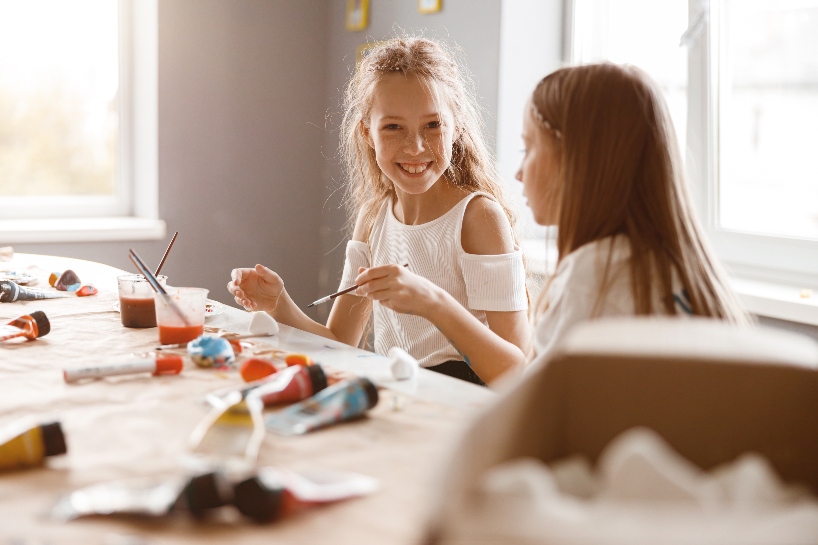The Importance and Benefits of Arts Education in Schools

Arts education isn’t always the easiest sell when discussing distribution of school time and resources, particularly when dealing with people of a more practical background. Of course, there are many benefits to teaching the creative arts in school, but it can help to see what those benefits are to solidify the concept in one’s mind. In this post, we’re going to look at some of the benefits of art education in primary schools and why a cultural education should be considered just as important as more practical lessons, like maths and language.
Why Are We Talking About Art in Schools?
Despite many understanding the importance of art for students, academically, surveys of primary school teachers in recent years have shown that a majority of those teachers believe arts education was in a substantial decline.
A large part of the reason for this decline is undoubtedly the focus on core subjects, such as literacy and numeracy. There is no doubt that these subjects are essential in the education of primary school students, of course, but the question of why is art important is one that needs to be addressed. Nobody should be arguing that art should remain in primary schools for art’s sake—it is the value of art as a medium of education that should earn it its place in our classrooms.
How Does Art Help Students?
It can be all too easy to look at art in the primary classroom setting on a purely surface level—how it helps students understand art itself—but the benefits of taking art classes go beyond the art itself. Here are some of the other ways in which art helps young students.
Learning Styles
Children are typically sense-hungry in that they enjoy learning through a variety of mediums and methods. Being forced to sit at a desk all day, reading textbooks and listening to a teacher is a good way to burn a child out.
In much the same way that trial runs have found that giving an employee time during their work schedule to be creative can improve their productivity, giving children time during school to be creative through artist study—be it in art, drama, music, or dance—can help keep their days in school from becoming too stale, and thus improving their ability to learn.
Literacy and Numeracy
It was mentioned above that one of the main reasons art seems to be on the decline is due to a stronger focus on core skills, but it should be considered that art classroom studies can help to improve these areas of education as well.
An example of this can be found in the visual studies aspect of art in education. Children may be asked to describe what they are seeing and express how it makes them feel. These tasks allow the children to put the skills they learn in core subjects like numeracy and language to use. They may consider things like angles and perspective, using language to put into words what the piece means to them.
Critical Thinking Skills
If asked, many people would consider themselves either a creative type or not. In practice, it seems that creativity is more of a spectrum than a binary state and not necessarily one that is determined by genetics. While it is perfectly fine for someone to be heavily creative or heavily pragmatic, it’s not necessarily the best idea to perch right on the edges of that spectrum.
Much of school these days is concerned with the more pragmatic side of things, but learning art skills is a good way to round out a student’s character somewhat. Even if that student grows up to feel about as uncreative as it is possible to be, the grounding in creative lessons they received can still help them later in life.
Motor Skills
While much of art can be considered a matter of visual culture, there is more to the subject than just looking at pieces of art. Children are encouraged to draw, paint, sculpt, and generally work with their hands. These activities are crucial to developing brains and bodies.
Children who struggle with motor skills in their hands—often evident through their falling behind in things like handwriting—can find improvement through things like sculpting things out of clay or similar mediums. The child would not even have to be an artistic learner to benefit, as it is the act of using their extremities to attempt to create something that helps them develop.
How Important is Arts Education?
Art in education tends to be downplayed due to a “zero-sum” outlook on the education of children and the belief that any time spent in education would be better spent dealing with core subjects. This is an outlook that may work in a factory environment where focusing on a particular product can yield objectively better results, but education is not a production line.
The reality is children have more needs than simply being able to perform sums and read books. Building their creative side will not only help in their future; it can also improve their mental health during their time in school itself.
